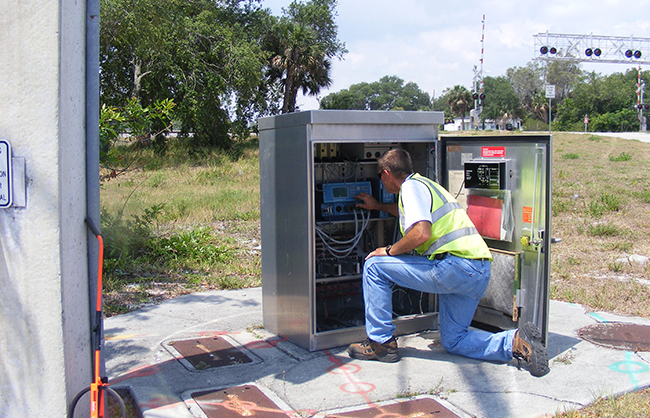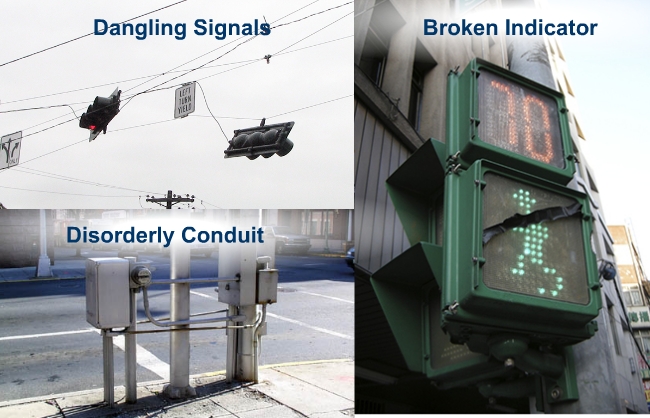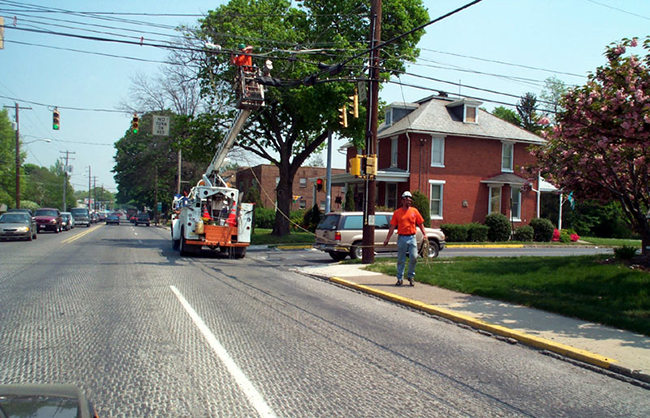Maintenance and Operations

Maintenance of traffic signals is a very important topic. The Traffic Signal Installation and Maintenance Manual, published by ITE, covers the maintenance of traffic signals in great detail.

A simple preventative maintenance program requires: regularly replacing lamps before the end of their rated life; overhauling the parts of controller units; repainting equipment and hardware; routine checking of voltage; and regular inspection of the equipment. Traffic signal timings should be re-evaluated every 3 to 5 years or when significant changes to traffic flow patterns occur.

Traffic signal maintenance is either preventive or in response to an identified need. Poor traffic signal maintenance leads to frequent breakdowns resulting in motorist complaints and discredit to the responsible authority.

Based on ITE data, an average intersection requires 52 hours of signal maintenance annually. Too often, traffic signal maintenance becomes a secondary, noncritical responsibility.
Maintenance: Using Contractors
Military installations not able to fully staff and operate a signal maintenance shop should consider hiring a contractor for signal maintenance work.
Advantages:
- Minor improvements are easier to implement under a maintenance contract than under a formal bidding process.
- Since the contractor provides all spare parts and equipment, an inventory of replacement parts is not needed.
- The contractor assumes a greater liability role if he/she fails to perform or respond within a reasonable time.
- Contractor should have more expertise in the maintenance of traffic signals.
Disadvantages:
- The response time to signal calls may be poor because of inadequate manpower and distance from contractor's office.
- Maintenance will be more constly than if it was performed by an in-house operation.
- A signal may be left in a flashing mode for long periods of time.


